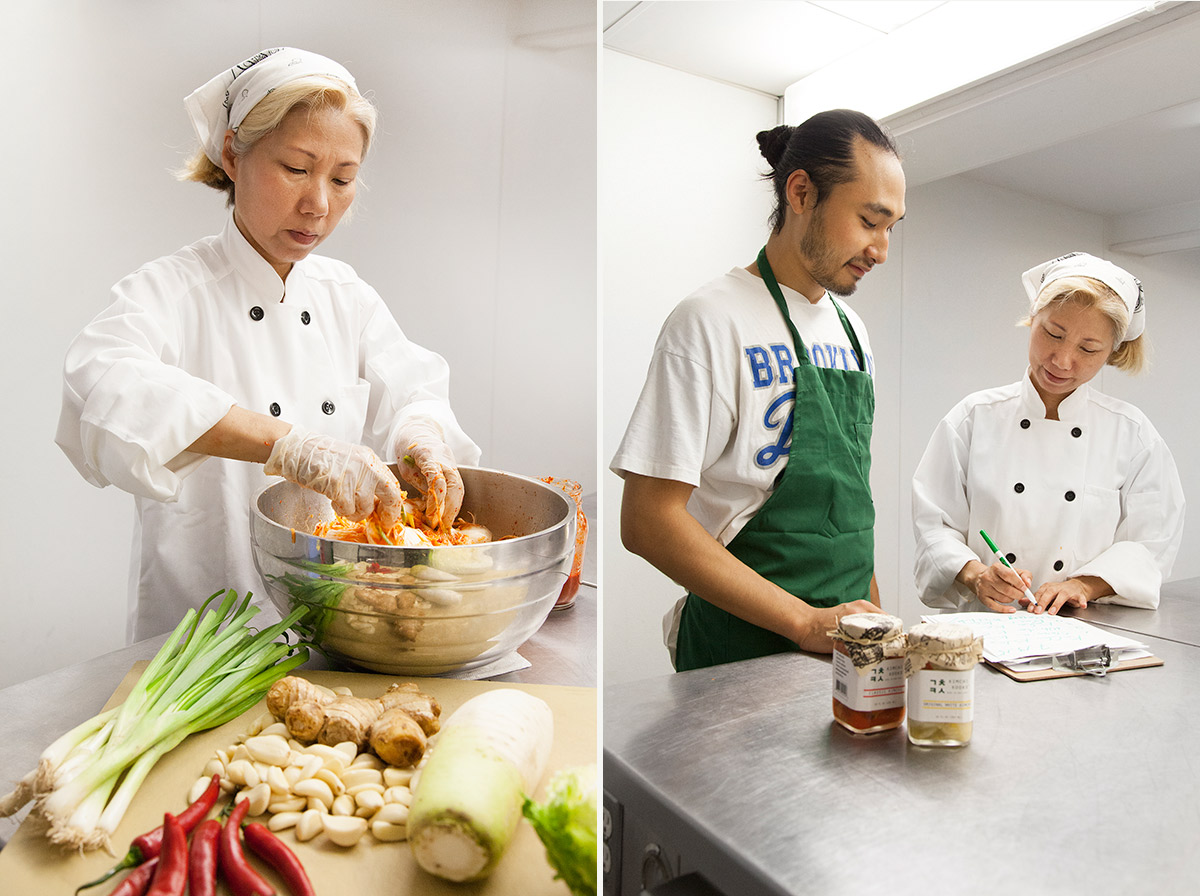Kimchi Kooks
Small-batch, fermented delights made in NYC by a mother-and-son artist duo


Kimchi has always been a source of Korean pride—yet the obligatory side dish (and cultural symbol) has made headlines in the past few years as cheaper Chinese imports have taken over restaurants and supermarkets. New Yorkers now can get a taste of kimchi that’s made authentically, with a lot of love, fresh ingredients and a pinch of creativity, thanks to Kimchi Kooks. The young Brooklyn-based company is currently a two person team: an artistic mother and son duo. Kate Kook is a textile designer who’s also worked in ceramics, painting, sculptures and installation—thus someone who’s used to working with her hands; and her son, WooJae Chung, is a filmmaker and actor. Last year, the two founded the now-defunct Kook Projects—transforming the ground floor apartment they lived in into a small contemporary art gallery in Midtown East. But now, they turn their creative focus to homemade kimchi.

Kimchi has a vinegar-like kick, but distinct from pickled foods, it uses no vinegar at all. It’s simply napa cabbage that sits in brine (and later rinsed off), marinated with raw garlic, ginger, fish sauce, red chili pepper and more; it’s the natural lacto-fermentation that allows for a light, delicate zest. “We never bought kimchi—we would always make it at home,” Chung tells CH of his childhood growing up in Queens. His mother, who worked for a while as a cashier at a Korean supermarket, wasn’t satisfied with the offerings available in New York and turned to her own recipe passed down from her grandmother.
Kimchi Kooks also makes baek kimchi (translating to “white kimchi”), a non-spicy variation that surprisingly isn’t found more often in Korean supermarkets. It makes a good stepping stone for those who’ve never been exposed to kimchi before, but they offer two more takes to win even the most reluctant over: a “Kimchi’d Kale” and “Kimchi’d Cabbage & Beets.” Swapping out the cabbage for other vegetables is quite common in Korea, and popular kimchi varieties include scallions, dandelion greens, cucumbers. “Kale was more of an experiment, but it worked really, really well because I love yeolmu kimchi,” says Chung, describing the summer dish made from stems and green leaves of young daikon radishes. While tough kale stalks are often discarded in cooking prep, the forsaken shine here. “Stems are kind of what makes our kale kimchi awesome,” says Chung. “That’s where the crunchiness is, like a pickle.”

Chung designed the label himself—and the beautiful packaging, complete with traditional hanji (Korean paper) on top, distinguishes the goods from what’s on offer in local stores. “Nothing looked appealing when I walked into a store. To me, kimchi has a much more special place—my culinary culture centers heavily around [it]. I want it to present itself that way,” says Chung. “I can’t ever buy kimchi to gift someone because it looks like… crap.” But you can feel confident giving friends a jar of Kimchi Kooks, and if they’re wary about the pungent smell that accompanies especially ripe kimchi, Chung has a good argument. “It’s funny, but you start to have this dialogue with your food—”OK, I see where you’re at. I can cook with you now,'” he laughs.
NJ and NYC residents can view a list of local stores that carry Kimchi Kooks; otherwise, sit tight as they gradually ramp up production.
Product images by Cool Hunting, all other images courtesy of Lindsay Keys












